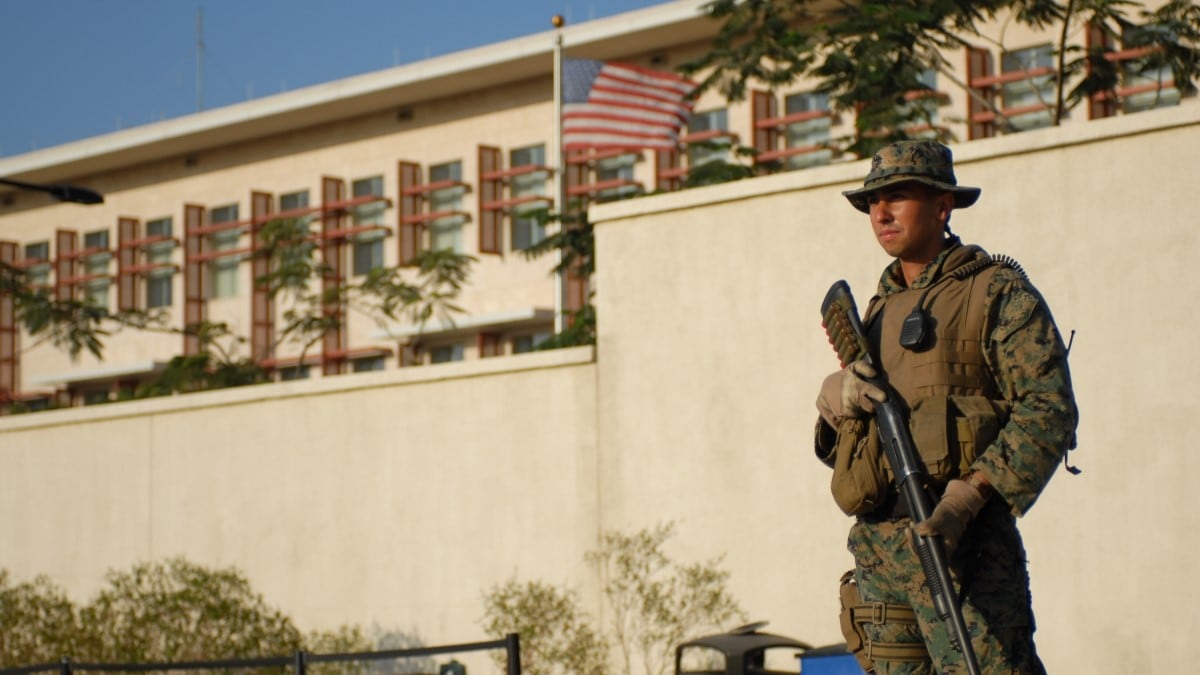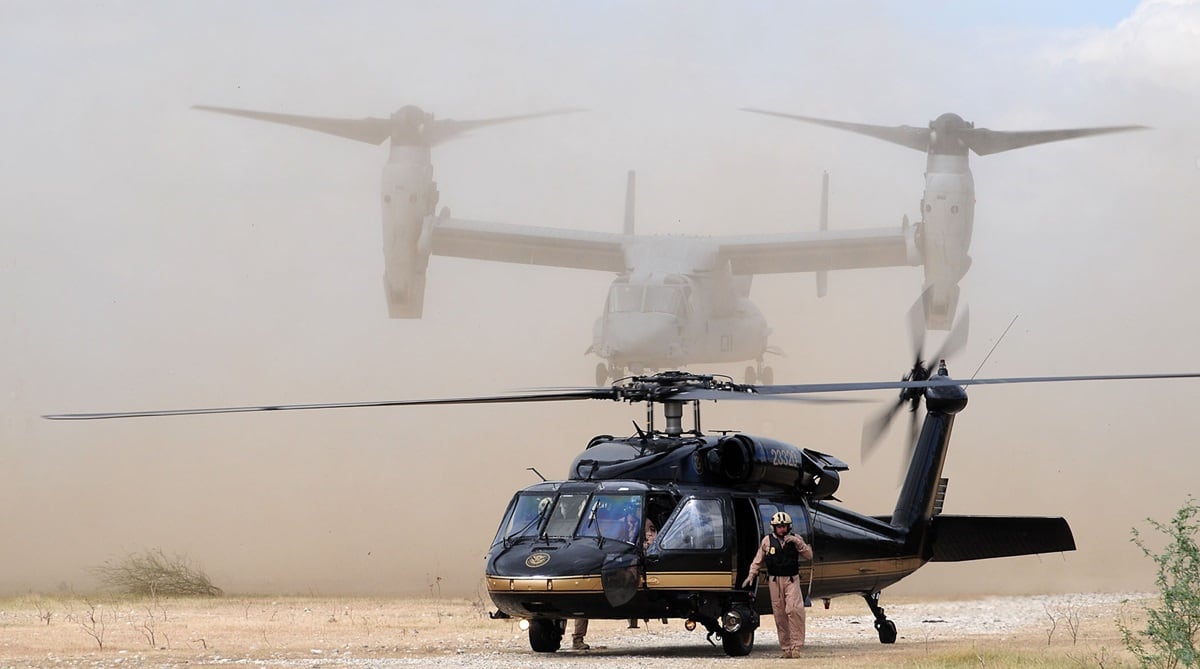Recent turmoil in Haiti reminds me of just how critical the V-22 Osprey’s capability was in 2010 ― and again in 2016, when I helped respond to a crisis situation in Haiti.
In 2010, a massive earthquake struck Haiti. Soon after, Ospreys were called upon to assist with disaster relief.
As Capt. Matthew “Leash” Dwyer told it, those Ospreys often were the first on the scene for many locations that had not received any relief such as water and food. While there, they also had to medevac injured civilians.
In 2016, after Hurricane Matthew wreaked havoc on the west side of Haiti, the country requested U.S. assistance. Soon afterward, I deployed as the commanding officer of the “Blue Knights,” an Osprey squadron attached to the 24th Marine Expeditionary Unit. Ospreys on that mission fulfilled critical logistics roles.
RELATED

Many supplies were being sent from the amphibious ship Iwo Jima. Ospreys were able to move supplies from the ship directly to locations on the ground in Haiti, side-stepping the congestion in Port-au-Prince and more efficiently delivering assistance.
Now, as ever, the importance of the Osprey’s readiness to respond to crisis cannot be understated.
For several years, V-22 Ospreys have become the indispensable go-to capability for rapid crisis response.
The versatility of the Osprey’s tiltrotor enables the aircraft to take off, hover and land vertically like a helicopter, yet travel significant distances as a result of operating at airplane speeds. This allows the Osprey to cover a significant range in response to diverse missions such as the insertion of Marines, the exfiltration of embassy personnel, the delivery of humanitarian relief or medical evacuation.
The Osprey’s track record makes it a critical element to any potential mission in Haiti.
More relief missions, faster
Another devastating earthquake struck Haiti in 2021. Then, five Marine Corps MV-22 Ospreys deployed to Guantanamo Bay, Cuba. From there, they were able to provide relief to some of the most remote, mountainous terrain in Haiti.
Because of the unique tiltrotor design of the Osprey, crews could refuel from ships offshore without being limited to runways or improved surfaces. This allowed Ospreys to deliver precious supplies to remote, unimproved landing zones.
The Osprey’s extended range and high cruising speed meant it could complete a greater number of deliveries per day than supporting helicopters, “proving it to be the workhorse of the relief effort,” according to one Marine officer.
During the two-week mission, Ospreys covered more than 5,300 nautical miles, according to an article published by the Navy, ferried 320 humanitarian staff and delivered upward of 234,100 pounds of essential food, water, shelter and medication to address the needs of the beleaguered Haitian people.
Evacuating embassies; rescuing hostages
The Osprey also has been instrumental when embassies have needed evacuation.
As 2013 was ending, South Sudan was on the brink of civil war. Soon the call came to evacuate Americans from the country.
On Dec. 18, 2013, two C-130s and several Air Force CV-22s departed Camp Lemonnier in Djibouti to help evacuate remaining embassy staff. Then, three days after that successful mission, three Ospreys were tasked to evacuate Americans 1,000 miles away in rebel-held territory.
But on the first landing attempt, the aircraft came under intense gunfire. While several service members were wounded in the incident, the rugged Ospreys were able to escape and make it all the way to Entebbe in Uganda, despite being severely shot up.
In 2020, in another long-distance rescue mission, four CV-22 Ospreys were instrumental in a mission to rescue an American hostage in Nigeria.
The Ospreys flew 2,000 miles from Rota, Spain, to a location in Nigeria where they deployed Navy SEALs.
This successful operation was the longest-distance nighttime hostage rescue in the history of the Department of Defense, the Air Force said.
Today’s crisis
We don’t know precisely what to expect in the next days, weeks and months in Haiti, but we need to be prepared. Marines have had a long history in Haiti, and in recent decades have been instrumental in everything from stability operations to relief and recovery.
Within the past month, the Marine Corps has sent a fleet anti-terrorism security team (FAST) special response unit to Haiti to supplement security, allow nonemergency personnel to depart and relieve Marines at the U.S. Embassy in the Haitian capital.
But we may need more than the FAST Marines. We may need a Marine air-ground task force, with Ospreys, to address the wide range of contingencies in Haiti, like we did in 2010, 2016 and 2021.
Regardless of the nature of the mission, the Ospreys will be instrumental. Their past performance ― in Haiti and elsewhere around the globe ― has proven their versatile capability and suitability for any eventuality.
Col. Anthony Krockel is the commodore of Training Air Wing FIVE. In 2016, he served as the commanding officer of Marine Medium Tiltrotor Squadron 365 and was the officer in charge of Joint Task Force–Forward Command Element in Port-Au-Prince, Haiti.




